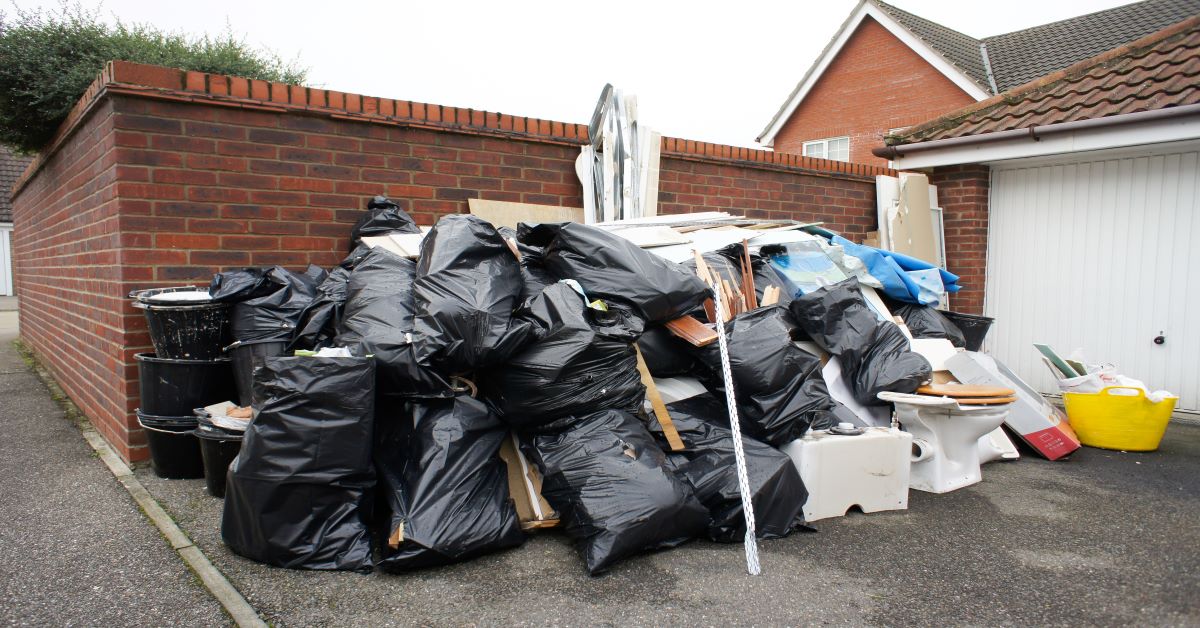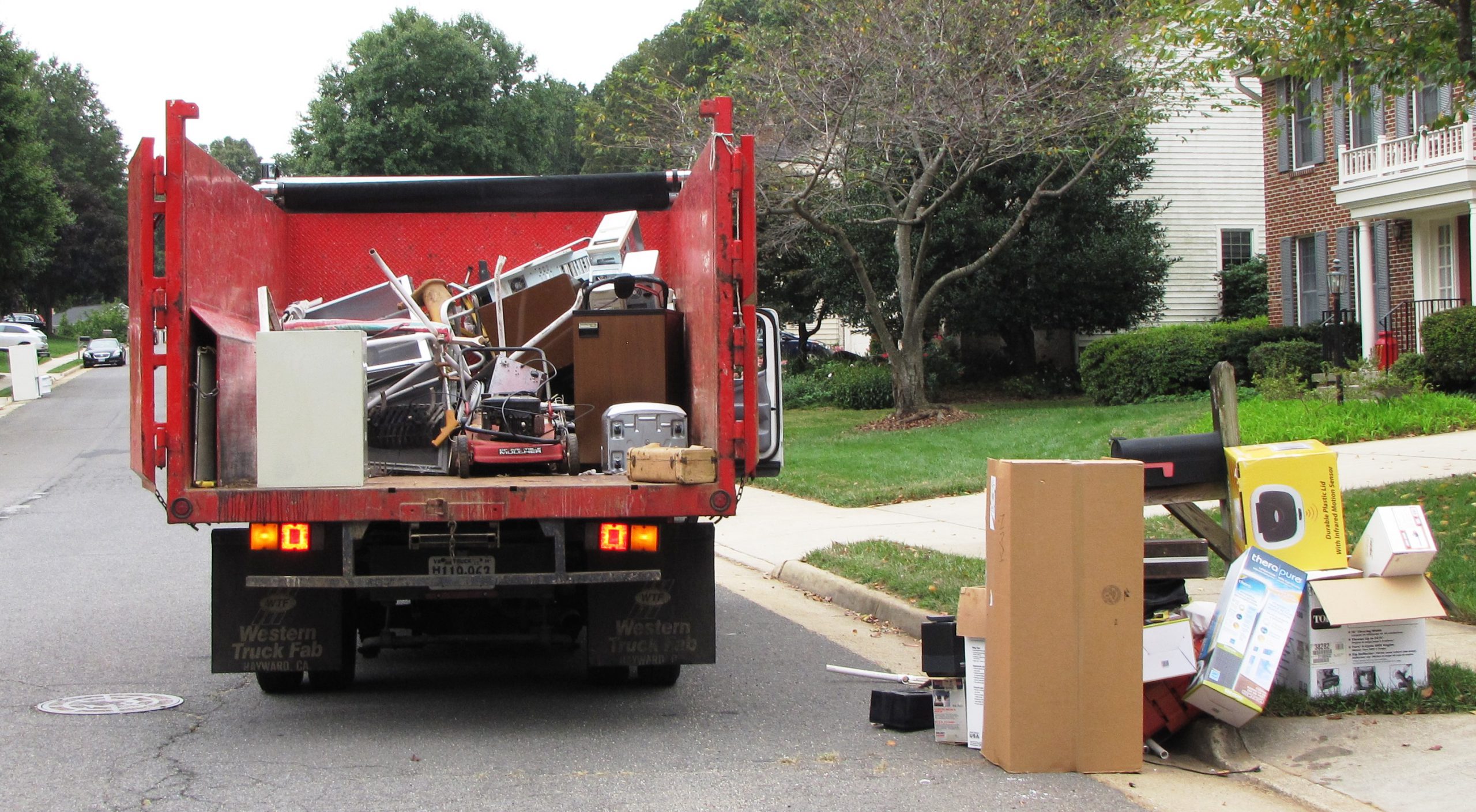Professional Waste Monitoring Techniques Customized for Industrial Settings
Tailoring waste management techniques to fit the one-of-a-kind demands of commercial setups is not simply advantageous but vital for preserving operational effectiveness and environmental sustainability. The quest for better waste monitoring in commercial setups entails a thorough strategy that stabilizes governing conformity, cost-effectiveness, and environmental obligation.
Value of Tailored Waste Administration
Tailored waste management practices are essential in commercial setups to enhance resource usage and minimize ecological influence. Industrial procedures produce a significant quantity of waste, varying from strong byproducts to chemical contaminants, positioning a threat to the setting otherwise handled effectively (Atlanta junk hauling). By personalizing waste management approaches to fit the specific demands and challenges of each commercial center, companies can not just abide by regulations however also boost operational performance and sustainability
One secret aspect of customized waste management is performing a complete waste evaluation to recognize the types and quantities of waste produced. This analysis allows firms to execute targeted remedies such as recycling programs, waste partition procedures, and waste-to-energy campaigns. By understanding the make-up of their waste streams, industrial centers can develop economical strategies to minimize waste generation at the source, causing long-term environmental advantages.

Sorts Of Hazardous Waste
What are the different classifications of hazardous waste generally generated in making procedures? Industrial waste can be classified into several main categories based on its composition and features. Harmful waste is among the most critical types, including chemicals, solvents, heavy steels, and various other materials that position a risk to human health or the environment. This category commonly requires special delivery and disposal approaches to protect against contamination and make certain safety and security.
One more common sort of industrial waste is non-hazardous waste, which encompasses materials like paper, plastics, and packaging waste. While non-hazardous waste might not position immediate threats, appropriate management is still important to reduce landfill use and promote recycling and sustainability techniques.

Hazardous Waste Handling Treatments
Effective administration of hazardous waste useful reference in commercial setups demands strict adherence to developed taking care of treatments to alleviate threats and guarantee ecological security. Hazardous waste handling treatments include numerous crucial steps to lessen the prospective impact on human health and the setting.
Second of all, once identified, harmful waste needs to be very carefully set apart from non-hazardous waste to avoid contamination and make sure appropriate treatment. Storage of contaminated materials need to follow laws regarding control, labeling, and compatibility to prevent leakages, spills, or various other events that might threaten workers or the environment.
Furthermore, handling procedures must include using individual safety devices, worker training, and emergency response protocols. Regular inspections, surveillance, and paperwork of contaminated materials handling activities are important to preserving conformity and click here for more info determining areas for renovation. By complying with these structured treatments faithfully, commercial centers can efficiently take care of contaminated materials and support their dedication to environmental stewardship.
Implementing Effective Recycling Practices

To execute effective recycling techniques, industrial facilities must initially conduct a waste audit to identify the types and amounts of recyclable materials junk movers in my area produced in their procedures. Based upon this audit, firms can after that establish designated recycling stations, offer proper training to staff members on proper sorting techniques, and work together with trusted reusing companions for the collection and handling of materials. Furthermore, setting certain reusing objectives, tracking progression, and on a regular basis connecting with staff regarding the value of reusing are essential steps to ensure the success and sustainability of recycling initiatives in industrial settings.
Monitoring and Continuous Improvement
To ensure the effectiveness and sustainability of waste management strategies in industrial settings, the execution of durable surveillance and constant enhancement processes is critical. Tracking entails tracking key efficiency indications (KPIs) such as waste generation prices, recycling percentages, and disposal prices. Consistently analyzing these metrics permits organizations to determine areas for renovation and measure the success of applied waste monitoring campaigns.
Constant enhancement is important for refining procedures with time. It includes evaluating monitoring data, recognizing inadequacies, and carrying out changes to maximize waste administration practices even more. This iterative strategy promotes a society of continuous enhancement and advancement within the organization.
Making use of technology like waste monitoring software program and IoT sensors can enhance monitoring efforts, supplying real-time information for notified decision-making. Staff member training and engagement likewise play an essential role in guaranteeing the success of surveillance and continual enhancement efforts, as frontline team are often principals in waste monitoring processes.
Conclusion
To conclude, tailored waste administration methods are critical for industrial settings to effectively deal with different kinds of waste, consisting of unsafe products. By executing reliable reusing techniques and continually surveillance and boosting waste monitoring procedures, sectors can decrease their ecological influence and make certain conformity with guidelines. It is crucial for firms to focus on waste administration to shield the setting and advertise sustainability in their operations.
Comments on “Atlanta Waste Disposal: Eco-Friendly and Liable Solutions”